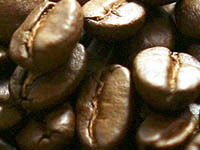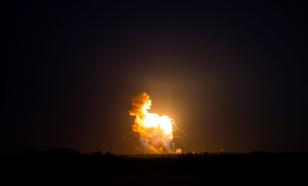Coffee rust causes state of emergency in Central America
Central American coffee plantations are facing a serious challenge. Nearly 70 percent of coffee fields in Guatemala are affected by fungal infection called coffee rust. President of the Republic Otto Perez Molina introduced a state of emergency in the country. Guatemala's national disaster threatens to turn into trouble for residents of other countries as well.

Central America has long been sounding alarm in relation to coffee plants' disease. Guatemala is the third country that declared a state of emergency due to the massive nature of coffee rust disease. Earlier, the emergency situation was introduced in Honduras and Costa Rica. Coffee is the main export item for the most countries in Central America. The majority of the countries located in this part of the world are agricultural, and coffee is the main crop. Nearly half of the total working population of Guatemala is employed in agriculture. The state budget will allocate $14 million to fight coffee rust. For Guatemala, whose GDP is about $47 billion, it is a very large sum. The funds will be used to purchase pesticides.
Coffee rust is a serious threat to agriculture. Rust pustules appear on the leaves of infected plants and gradually take over the entire leaf surface. This leads to premature drying up of the leaves and serious weakening of the trees. Such trees are affected by numerous secondary pests and eventually almost certainly die. The affected plants still produce coffee for some time, but no more than 10-20 per cent of normal crop. The most efficient, according to experts (and practically the only) method for controlling the disease, is cutting down plantations. The success of using pesticides planned by the Guatemalan authorities causes doubts. Currently, there are no types of coffee that are not affected by the rust.
For over a hundred years coffee rust has been a tragedy for the producers and sellers of coffee. For the first time the disease made the world pay attention in late 19th century, when it became the cause of mass deaths of coffee trees on the island of Sri Lanka, then called Ceylon. This caused serious economic shocks. The Great Eastern Bank went bankrupt, and agricultural policy of Ceylon was completely revised. Since then coffee has not been grown in the country, and vacated areas were allocated for cultivation of tea bushes.
Coffee rust was one of the major reasons why the global economic community made a bet on coffee from Latin America. The disease became disastrous for all planters of the Old World, but did not exist across the ocean. Plantations developed in Guyana, Martinique, Brazil, Cuba, and other nearby countries 100-150 years ago began active development after the agricultural disaster in Ceylon. Currently, Brazil produces 40 percent of the world coffee. Other important exporters of the product include Colombia, Mexico, Ethiopia, Vietnam, Indonesia and India.
However, in 1970 the good luck of Latin American coffee producers ran out, and coffee rust was found in Brazil.
If oil is called "black gold", by analogy with sporting events coffee should be called "black silver". Coffee is the second largest product in the world in terms of sales after oil. For nearly 18 years, since 1995, coffee has been the most popular beverage in the world. According to statistics, it is consumed by four out of five people. Every year the world consumes over 400 billion cups of coffee, that is, 57 cups per person. Scandinavians are the biggest coffee lovers and consume 12 kg per capita. Finland has been the leader in this field for many years.
If the authorities of Central America are not able to cope with the disease and coffee rust spreads over the continent, the world may expect a very unpleasant change in the price of its favorite product.
Anastasia Garina
Pravda.Ru
Subscribe to Pravda.Ru Telegram channel, Facebook, RSS!


